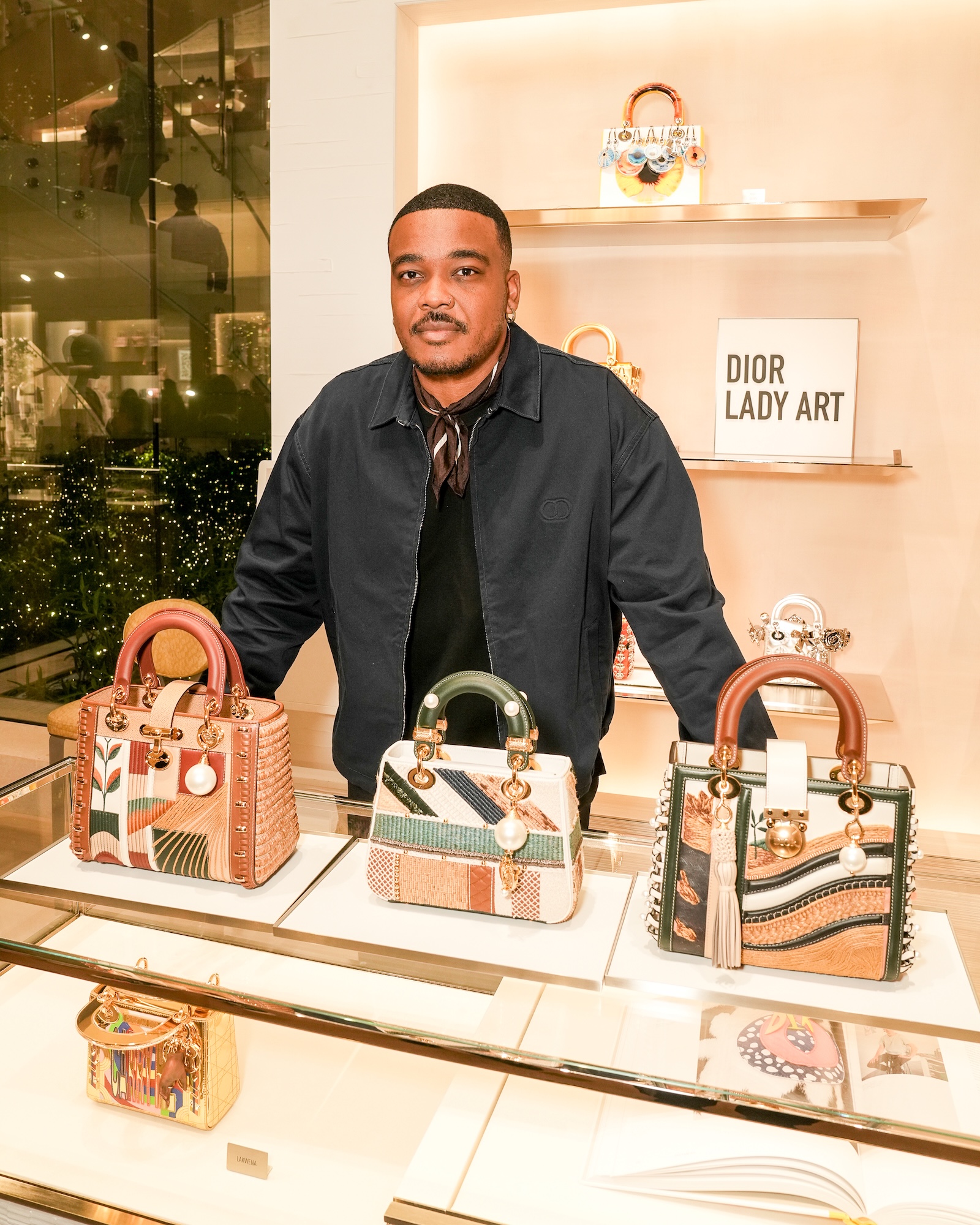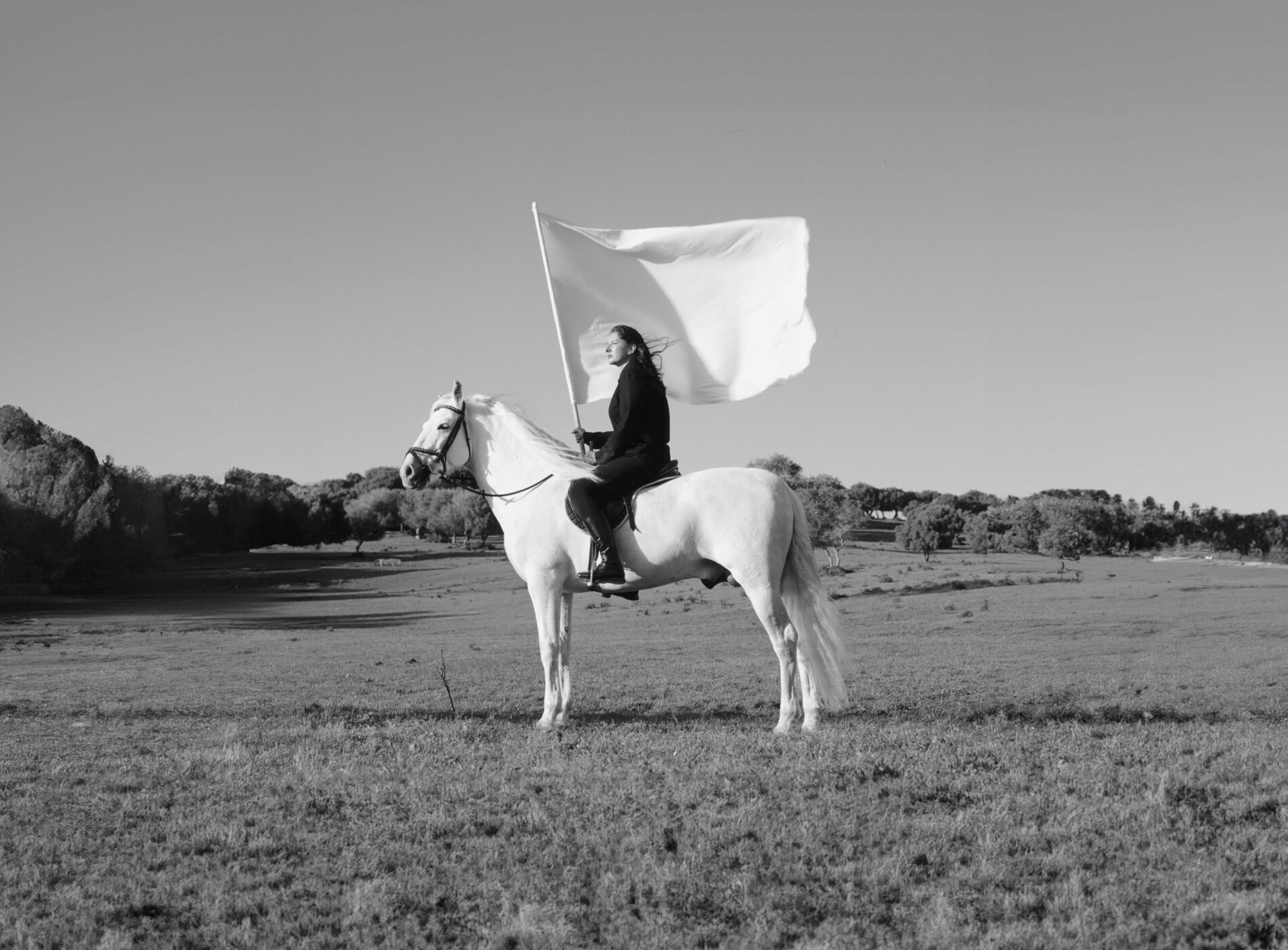He remembers the warm wind, the smell of the fig trees, the thrum of cars outside the cheap motel as they careened down the dark highway. “It was a dream,” curator Olivier Saillard remarks of his first ever holiday— he, his brother and his four sisters crammed into the car by his parents and routed to the South of France. “I’m from a modest family,” he shares, “from the same place where Louis Vuitton came from, the coldest place in France. And because we were very modest—both of my parents were taxi drivers—we never went on holidays. But that time, even in the tiny motel room, which was so hot, with the noise of the cars, we were all together as one, and it seemed as if we’d traveled to an exotic place.” So crystallizes the effect of a wander through Louis Vuitton’s immersive Volez, Voguez, Voyagez exhibition. A roving retrospective of LV artifacts curated by Saillard (previously exhibited in Seoul, Tokyo, and Paris), the impressive show traces a well-worn map of wonderment and discovery—that inimitable spirit of travel and glamor—through the history of one of the world’s most recognizable brands. Informally known as “VVV,” the show has now found a temporary home in New York City ‘s defunct American Stock Exchange building. Here, rather than fig or pine trees, smells of copper and smog-choked Honeylocusts fill the air, the tiling and finishes of the multi-story trading hub dust-coated for the last 20 years. And while it could be said that the brooding building on the southern heel of Manhattan Island exemplifies the metaphoric antithesis of a holiday, to Saillard’s point, that’s not the point. The point is to appreciate the journey, the destination, wherever it may be. To appreciate what commenced as forward-thinking utility, evolved into a boastful clientele, and later hot air ballooned into timeless luxuriance, from France to Senegal, Poland to Peru.

“In the beginning,” Saillard says as we stroll the space during the final hours of install, a flurry of specialists wearing gloves and clinician-style suiting positioning, placing, unwrapping at the oversight of Set Designer Robert Carsen, “You never invented something for fashion. It was always related to the use of something. It was a huge deal with the beginning of the train, the boat, the plane, the automobile. There is a room that I really love which is a room devoted to the importance of cars. After this period, of course, is the story of the handbag. But, we have to recognize what came first. Consider that in 1901, the steamer bag was born by Louis Vuitton. It was a bag devoted to laundry and was customized to fit into the trunk of your car. It was the beginning of supple bags.” We pull up to a sidelong, halved rectangle of floor-to-ceiling glass displaying more treasures. Against the wall, it’s all whirring by at a comfortable 15 or 20 miles per hour, black and white and from another era, a window-like LCD panel exposing terrain unseen. Yes, travel. Movement through time. Otherness. Getaways. Aromas bristling, whistling, numbing. Where are we looking? What’s changed since we’ve been there? Is it like I remember? When do we get there? At the portal’s feet lie a century’s plus fleet of luggage, accessories, and ephemera from this journey to nowhere in particular. I ask Saillard, despite the interwoven, endless adventures throughout the show, why we’ve ended up here in the heart of New York, a destination unequivocal, unmistakable.

“It’s interesting,” he tells me. “Louis Vuitton decided to leave this coldest place in France when he was 13 years-old for Paris. It was a very strange and unique experience for him. At the very end of the 19th century, he discovered a company that specialized in exports to America. So it was at the very beginning, very immediately after he founded his own company, that he began this relationship. And it was very natural to invent. And New York was probably the most natural place for that. A lot of very famous people immediately during the early part of the 20th century began to buy Louis Vuitton from him. And of course, for this exhibition we customized and added some things, like the Red Carpet Room.” The lush room in reference features a large, shutterbugging panoramic screen of modern brand ambassadors— Alicia Vikander, Michelle Williams, Jennifer Connelly—attending the Met Gala and other awards efforts amidst a number of one-off gowns kindly returned to the House. This room also features a gown created in collaboration with artist Richard Prince and inspired by his “Nurse Paintings,” made famous by Naomi Campbell.

Saillard’s eyebrows lightly dance over his forehead as he speaks—he smiles often—and while the frenzied activity around him is distracting at best, this is not his first rodeo; he is calm and measured while we pour over the hardback book that accompanies the exhibition. I’ve dog-eared a few notable objects that correlate to our “Reflections” issue theme. We discuss the 1925 Milano case, a gorgeous briefcase-like cosmetic kit that features a medley of ivory- forged hairbrushes, shaving tools, and combs that glint in the light. Ironically, despite the namesake, the piece is inspired by NYC, a poetic tether that extends to other elements of the curation beyond the venue. “It’s a very, very nice beauty case made for universal exploration,” Saillard comments. “And something very unique: if you look closely, the comb shapes are inspired by buildings from New York. And you know what? The man who did this: he designed the case this way so that when you insert the tools, nothing touches the edges and the integrity of the brush remains.” “They’re protected?” I ask, considering the fallibility of our modern skyscrapers, here within reach of One World Trade. “Yes,” Saillard responds, “And, what you see here in the exhibition— those white pieces—are actually recreations. We couldn’t bring the original ivory or it could cause problems.”

Following a return later that evening to the opening—where several of the mentioned ambassadors have arrived to mix with press and clients and NY intelligentsia, wandering the concrete warren where the whimsy and scatter of the day has since been ironed into perfection—it’s out into the rises and spires of New York, the ivory towers. A nearby pier will host the after-party, Mark Ronson and Virgil Abloh’s sets keeping folks wiggling until the later hours. The next afternoon, on the flight home to Los Angeles, I’m sat next to Jane Fonda, whom I’ve had the pleasure of interviewing before, and who, for the record, is a badass. We exchange a few niceties (“What takes you to NYC, Jane?” “Activism,” she replies.) She tells me about her latest film, a comedy about a book club. The plane touches down in soupy LA, and I open the overhead compartments to retrieve a requested business card for her. There sits a charmingly worn LV cruiser, which I lower to the floor. “That,” I say, pointing to her iconic carry-on, “is what brought me to NYC.” “A friend once told me, and she was a long-time fan of Vuitton, that all you need should fit into your carry-on,” she says as we exit the plane, tugging her cream bucket hat down over her cat-eye shades. “And a ticket doesn’t hurt,” she laughs dryly, before being whisked away by her LAX point of contact, a young man perhaps a third her age.
Written by Matthew Bedard
Photographed by ioulex


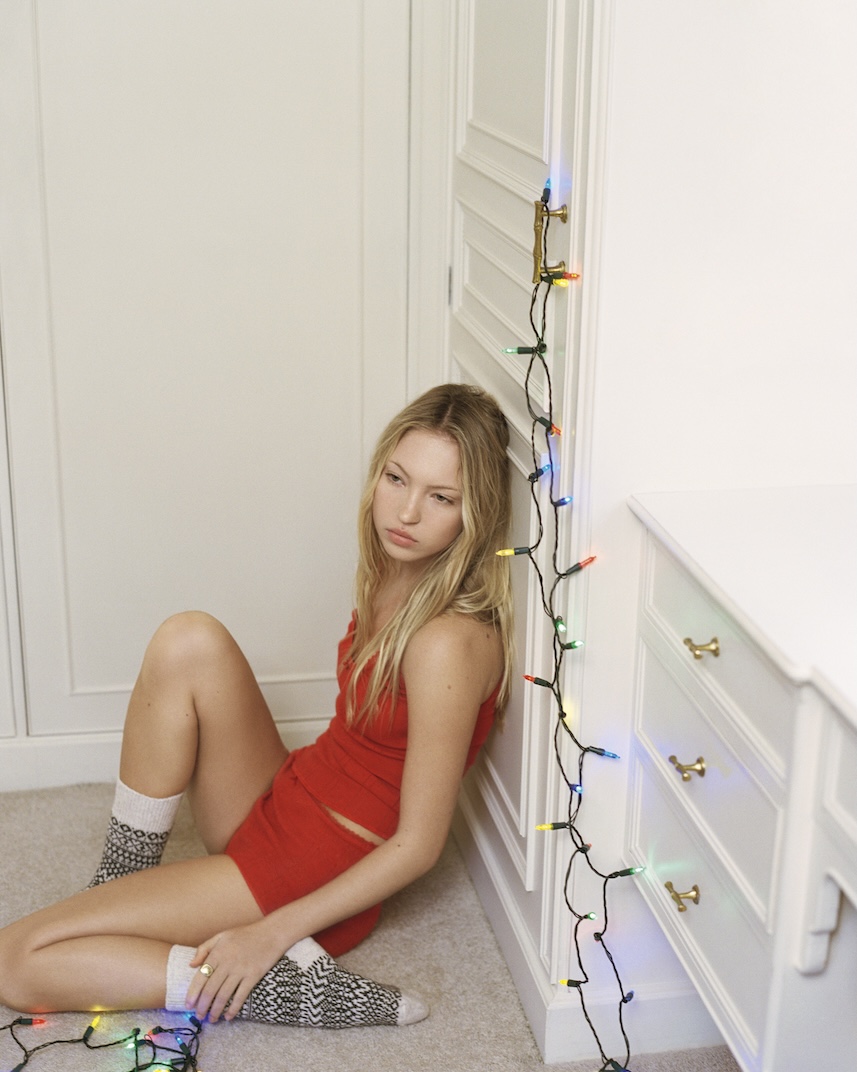
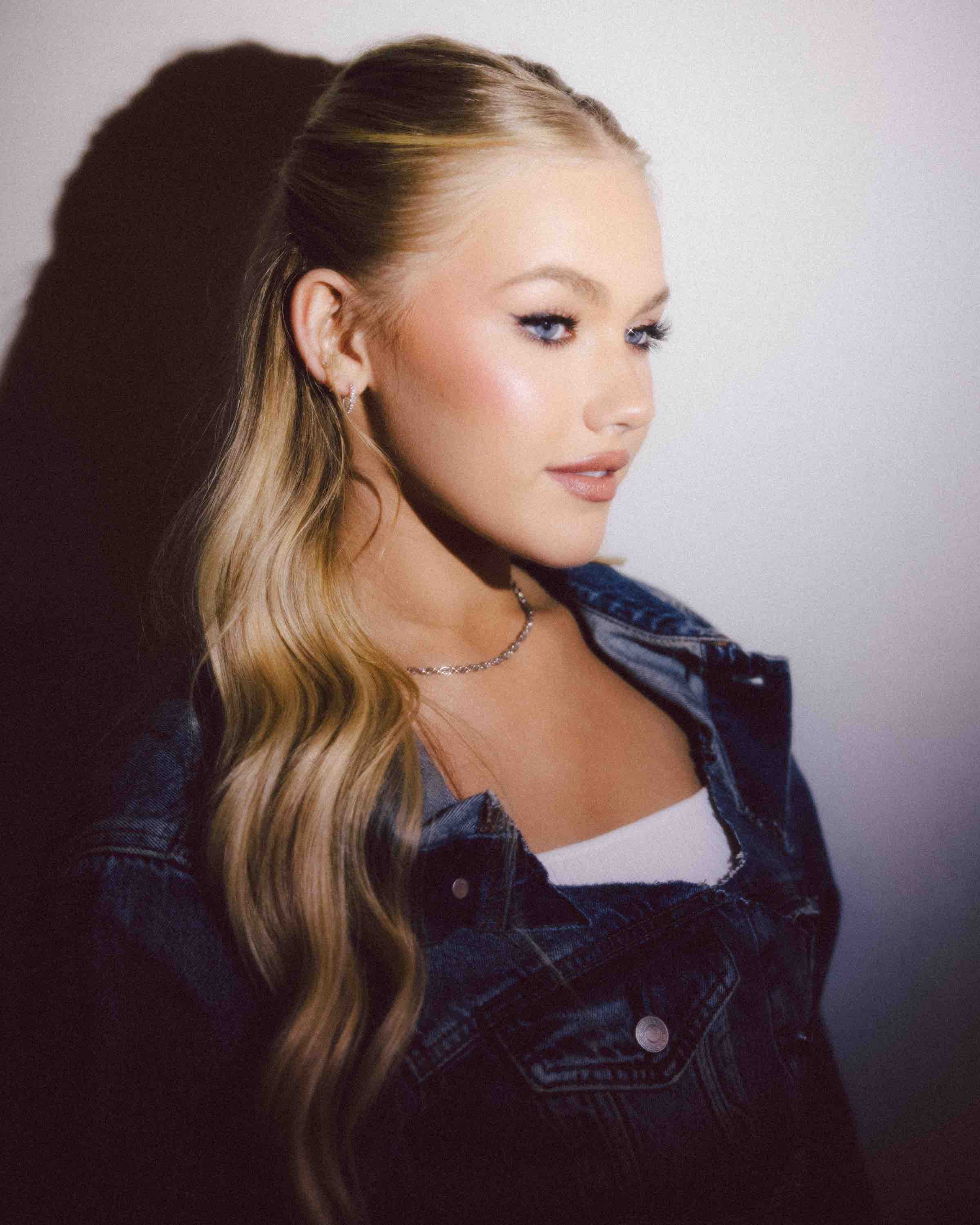
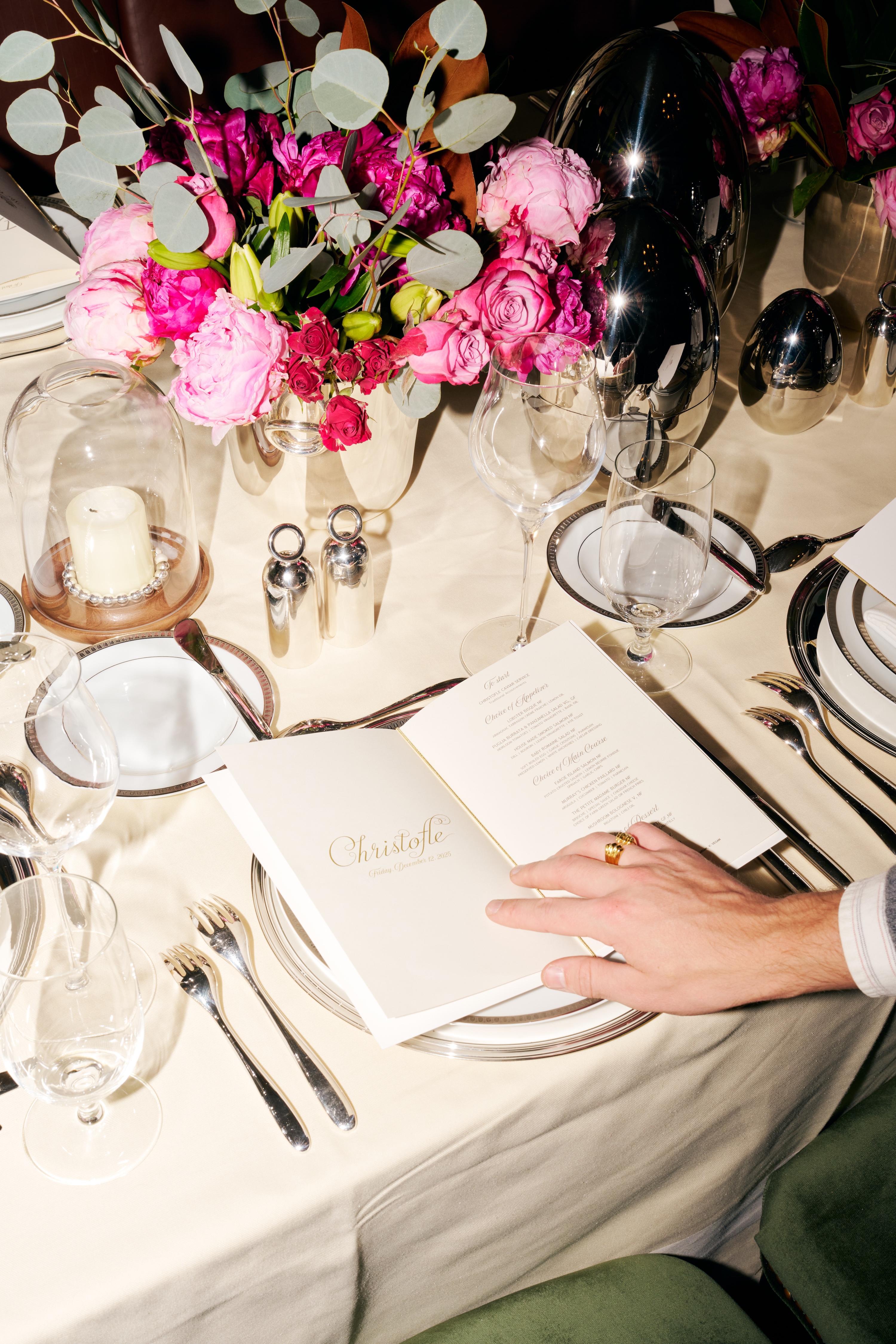

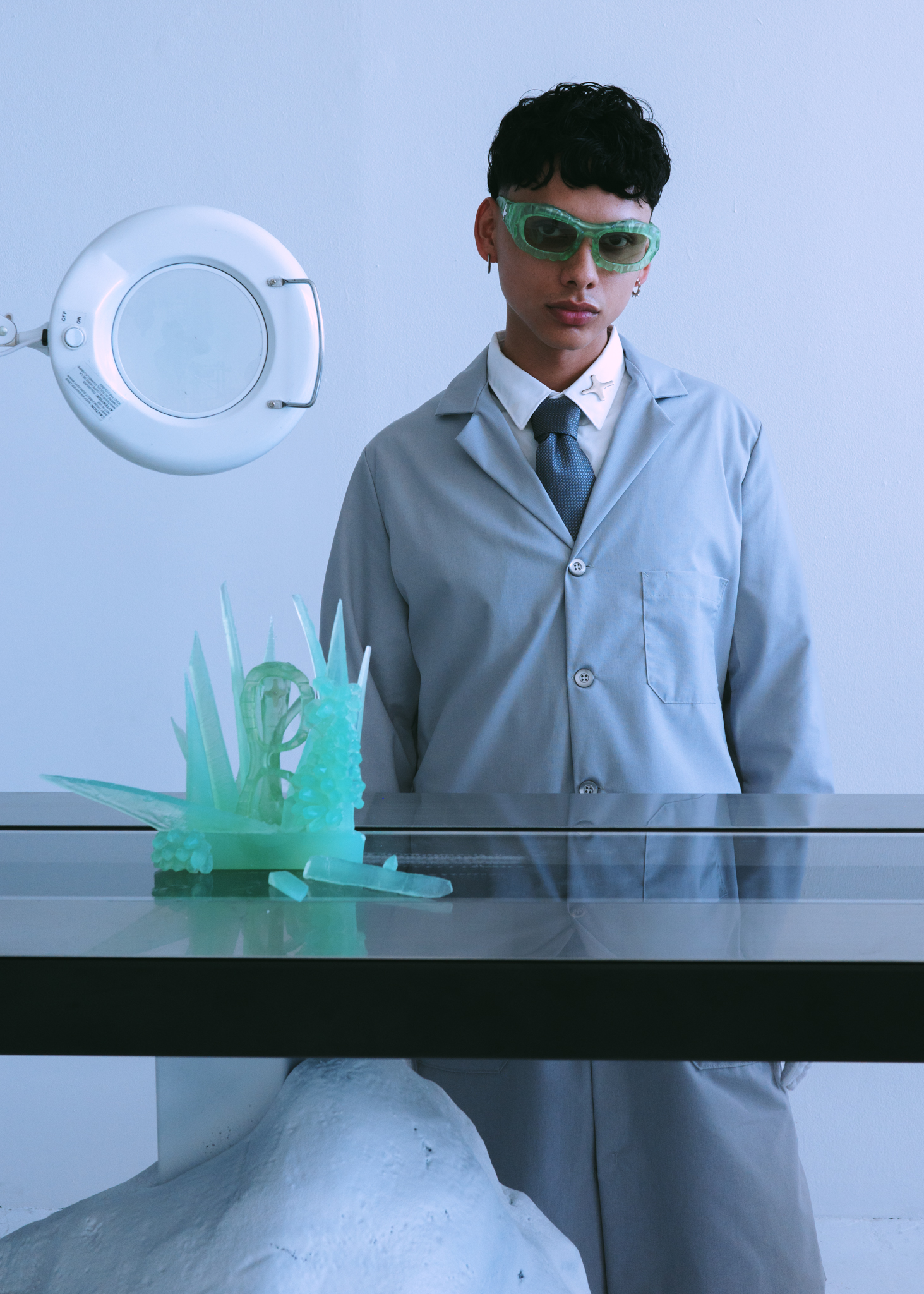
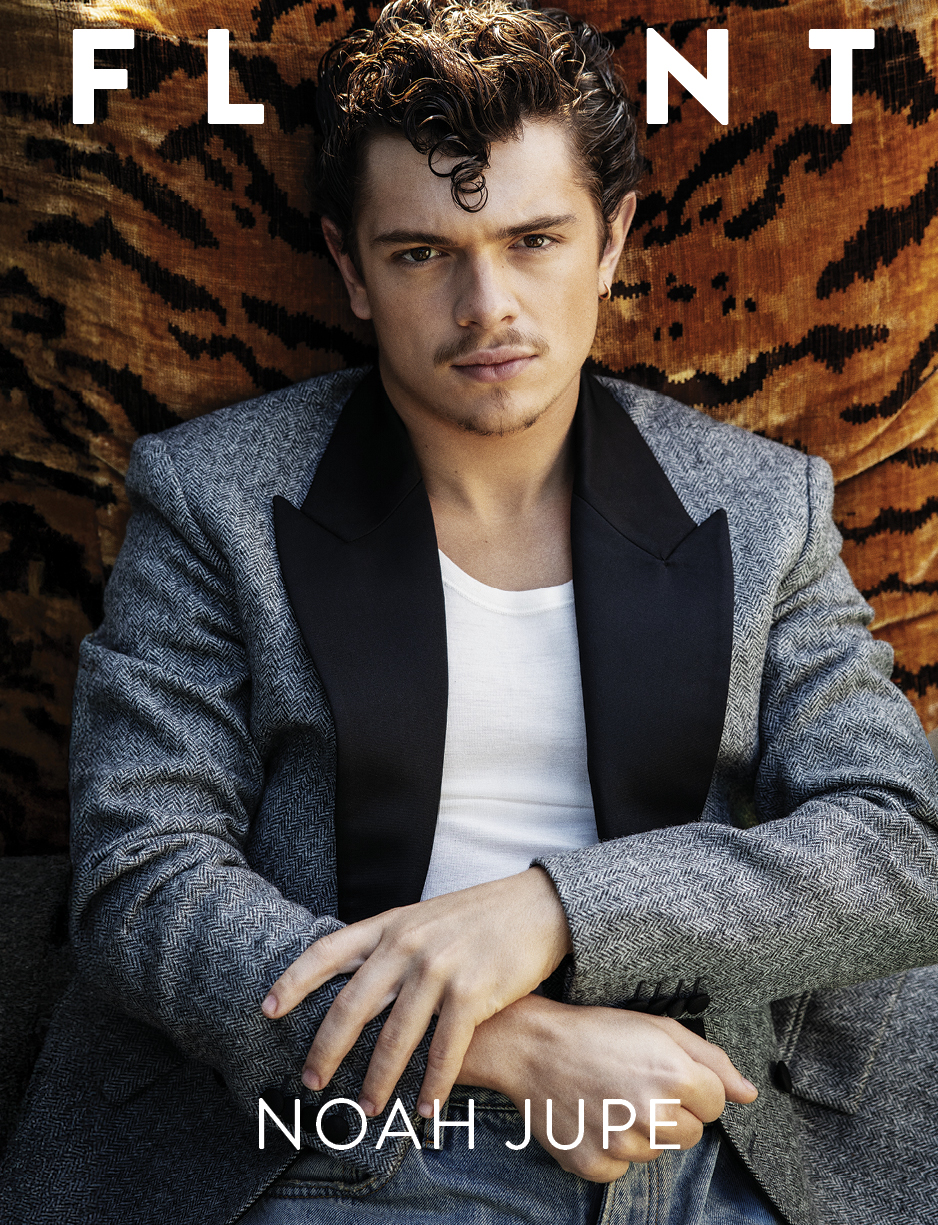
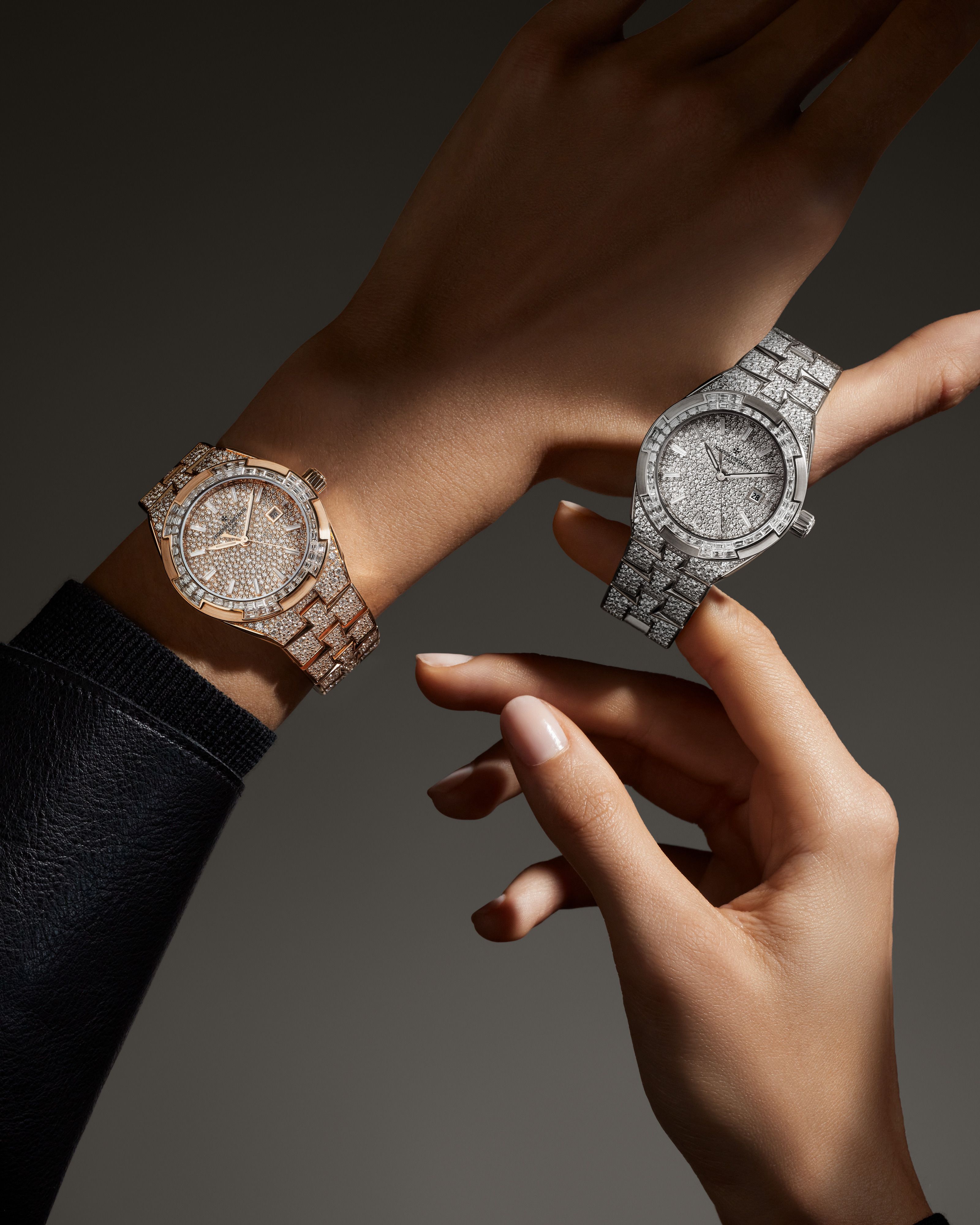

.JPG)
.jpg)
